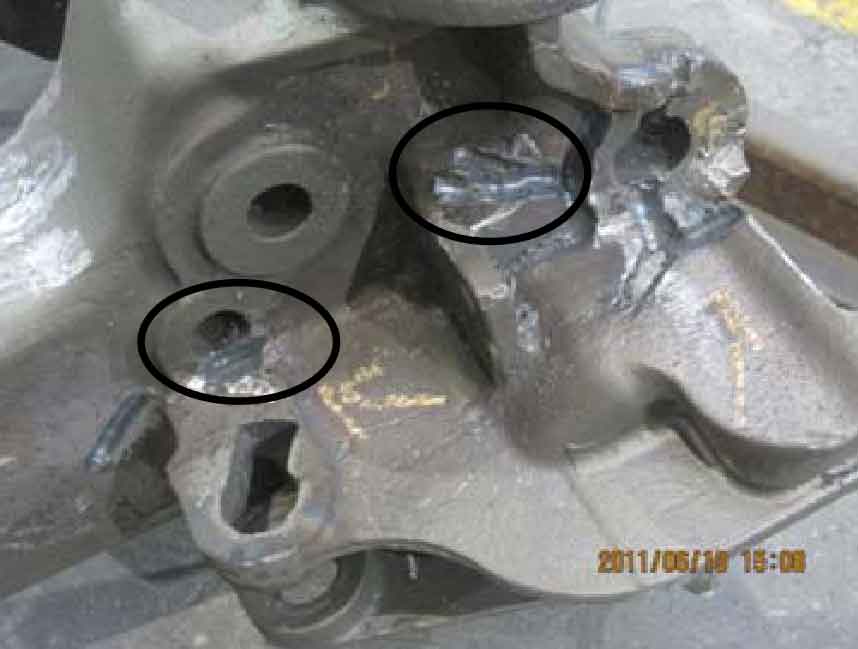After years of development, the prediction criterion of shrinkage porosity and shrinkage defects of steel castings has reached a high level in terms of accuracy and application range, which can effectively predict the shrinkage porosity and shrinkage defects in casting steel. At present, most simulation software at home and abroad use niyama criterion to predict shrinkage porosity and shrinkage defects. Tian Xuelei of Shandong University improved the traditional shrinkage defect criterion niyama, introduced the static pressure P0 of liquid metal into the criterion, and obtained the improved criterion P0 niyama. The calculation results show that it is more effective than the previous criterion.
The deterioration and spheroidization of gray iron castings, especially nodular iron castings, have a great influence on the formation of shrinkage porosity and shrinkage cavity, and have not achieved satisfactory results all the time. In recent years, the research on Solidification Simulation of gray cast iron mainly follows two lines. One line is based on the principle and pays attention to the simulation of the closing time of the riser neck to judge the defects. Based on this principle, Zhu Xianhua of Xi’an Jiaotong University simulated and predicted simple castings. The results show that at present, this method needs a large amount of memory and long calculation time, which is difficult to deal with complex castings, and it is assumed that the mold stiffness is enough to resist graphitization expansion without deformation, that is, it does not deal with the problem of medium cavity expansion in the solidification process. The other line is based on the shrinkage cavity simulation of steel castings and shrinkage porosity defect criterion (mainly niyama criterion). Li Jiarong of Beijing Institute of Aeronautical Materials and Liu Baicheng of Tsinghua University applied niyama method in the prediction of shrinkage and porosity defects of nodular iron castings. The research shows that niyama method is not suitable for the prediction of secondary shrinkage and macro shrinkage and porosity of nodular iron castings. There has been a lack of reliable and effective criteria for the prediction of shrinkage and porosity defects. Li Jiarong and others proposed shrinkage and porosity of nodular iron on the basis of a large number of tests “Dynamic superposition method of shrinkage and expansion (DECAM)” for predicting the formation of shrinkage defects. Based on the Fe-C equilibrium phase diagram, this method uses the lever principle to calculate the shrinkage and expansion during solidification, and superimposes the shrinkage and expansion, which can predict the formation of shrinkage porosity and shrinkage defects in nodular iron castings, but ignores the volume change of secondary shrinkage of nodular iron, especially the interaction between grid elements during graphitization expansion, The method of average applied expansion value is adopted to reduce the simulation accuracy of mold wall movement. Based on the microscopic simulation of nodular cast iron, Li Wenzhen and others established the volume change model of nodular cast iron in the solidification process from the perspective of microscopic nucleation and growth, and further put forward the quantitative prediction method of shrinkage porosity and shrinkage cavity of nodular cast iron based on microscopic simulation. Some foreign researchers also put forward the model of quantitative calculation of volume change in the solidification process of nodular cast iron The prediction method of shrinkage defects has been partially put into practice and still needs further research.
There is no effective criterion for shrinkage porosity and shrinkage cavity defects due to the modification problems and complex conditions of non-ferrous alloys such as aluminum castings and copper castings. Ruici Kato of Huazhong University of science and technology and Nagoya University predicted the shrinkage porosity and shrinkage defects of aluminum alloy during local pressure solidification and flow by using the equal solid phase rate curve method. Liang Zuojian of Tsinghua University only assumed the inverse relationship between pressure gradient and micro shrinkage defects in the prediction of micro shrinkage and porosity of Ti Al alloy precision castings. The results show that reducing the cooling rate and increasing the temperature gradient can reduce the prediction of shrinkage and porosity defects, which is consistent with niyama’s judgment. Up to now, there is little research and Application on the effective shrinkage porosity and shrinkage defect criterion of non-ferrous alloys.

